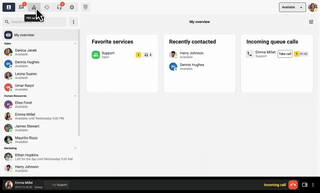IP telephony, softphones, SIP, VOIP and landlines… You can get dizzy for less! Here we take a closer look at the difference between analog phones and IP phones.
Analog phone or IP phone?
Traditional landline telephones, which consist of a telephone set and a handset, have remained virtually unchanged since their invention in the late 19th century. On an analog telephone, calls are made over the fixed, physical telephone network. The telephone’s connection to the analog network is via a cord.
In the early 2000s, a new type of telephony, IP telephony, started to gain ground. With IP telephony, you make calls via the internet, instead of via the fixed telephone network. There are many advantages to IP telephony, and the cost of IP telephony is usually significantly lower than for fixed telephony.
IP phone, VOIP phone or SIP phone?
There are many names for the same thing. In simple terms, IP, VOIP and SIP basically mean the same thing – namely that audio and sometimes video is streamed digitally over the internet. Read more about the difference between VOIP and SIP here.
Physical phone or softphone?
IP phones come in two different flavors: either you choose a traditional, physical desk phone or you can use a softphone.
Traditional desk phones usually include features such as regular calls, conference calls, Bluetooth and speakerphone. A softphone is instead a piece of software on your computer or mobile. A virtual phone, you could say. A softphone has more and more advanced features. We have written more about how a softphone works here.
Benefits of SIP trunks and SIP telephony
There are several advantages to making calls over the internet, rather than over the analog phone network. One of the most obvious is that it is significantly cheaper. Another advantage is that you become less dependent on the fixed network. With SIP telephony, you can make calls wherever you are – as long as there is an internet connection.
What is a SIP session?
A so-called SIP session, is simply a phone call via the SIP trunk. With SIP, you can establish sessions between two parties, receiver and sender, by notifying the receiver of the incoming session. You can also, for example, put calls on hold, transfer calls and add more participants during the session.
SIP vs PSTN
The analog telephone network, also known as the PSTN (Public Switched Telephone Network), was for a long time the only existing option for telephony. The PSTN is the physical telecommunications network made up of wires and cables, and was the backbone of all telecommunications.
But those days are coming to an end. Instead, demand for digital telephony services and cloud switches, SIP trunking and IP telephony is growing all the time.
Want to know more about telephony and PBX services for your business? Book a free demo and we’ll take a look at how Telavox can help you!


